SimLab Tutorial Summary: Multi-physics (EM, NVH, CFD) Analysis of a 75 kW PMSM - Motor Mode
Description
The studied device, represented in the following figure, is a surface inset permanent magnet synchronous machine (PMSM) used on traction applications with a 75 kW power rating. It is a three-phase machine with 45 stator slots and 10 rotor poles made from M800_65A steel. It operates in the motor mode in this application case.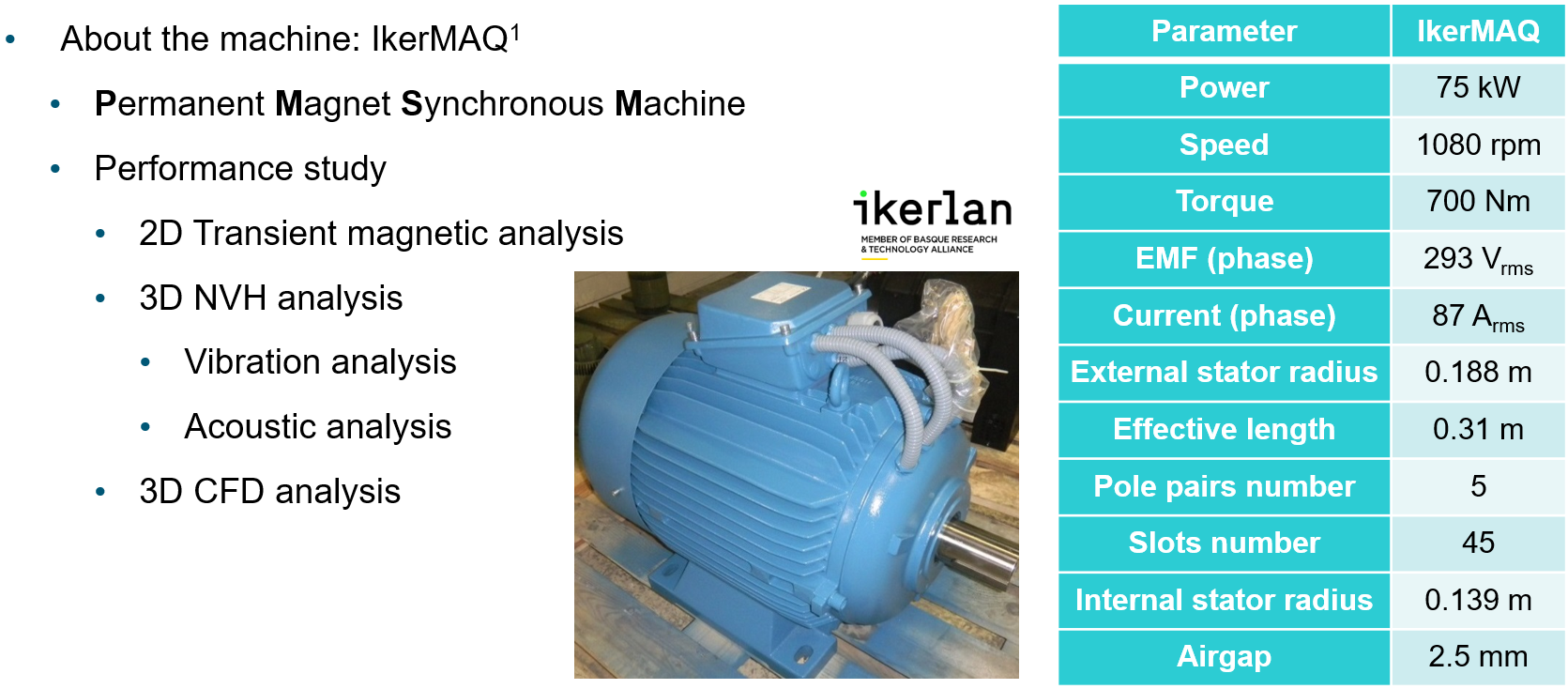
After the 2D transient magnetic is finished, the post-processing results, such as stator tooth electromagnetic forces and loss distribution can be used for further NVH (with OptiStruct) and CFD (with AcuSolve) analysis. The electromagnetic forces acting on stator teeth computed in Flux will be converted to Load Case for OptiStruct to run a 3D NVH analysis. And all loss results obtained with Flux will be converted to Heat Sources for AcuSolve to run a 3D CFD analysis. The multi-physics analysis workflow (with the outside airflow considered) is shown below:
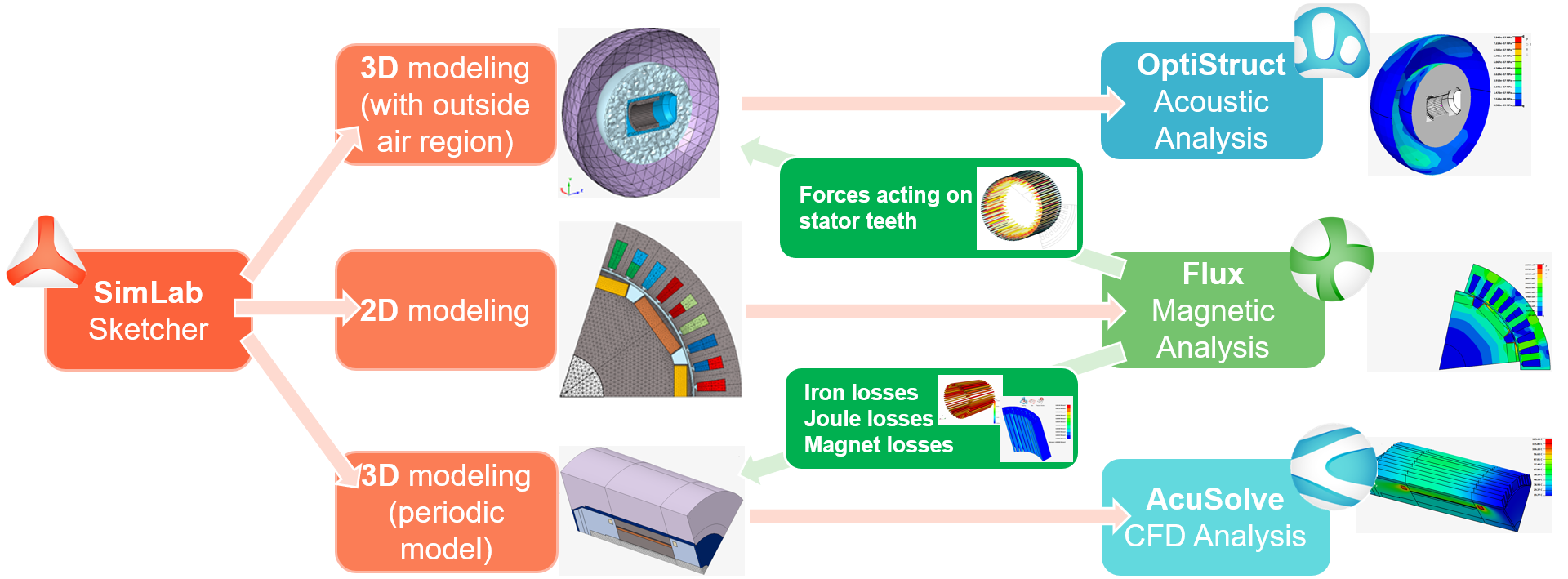
Analysis 1: 2D transient magnetic analysis
The objective is to calculate electromagnetic torque and other electrical parameters (phase voltages, phase currents, power, losses, etc.) for different rotor positions under transient analysis. In this case, the transient magnetic application is coupled with an external three-phase circuit (created by the Circuit Template) while varying rotor position.
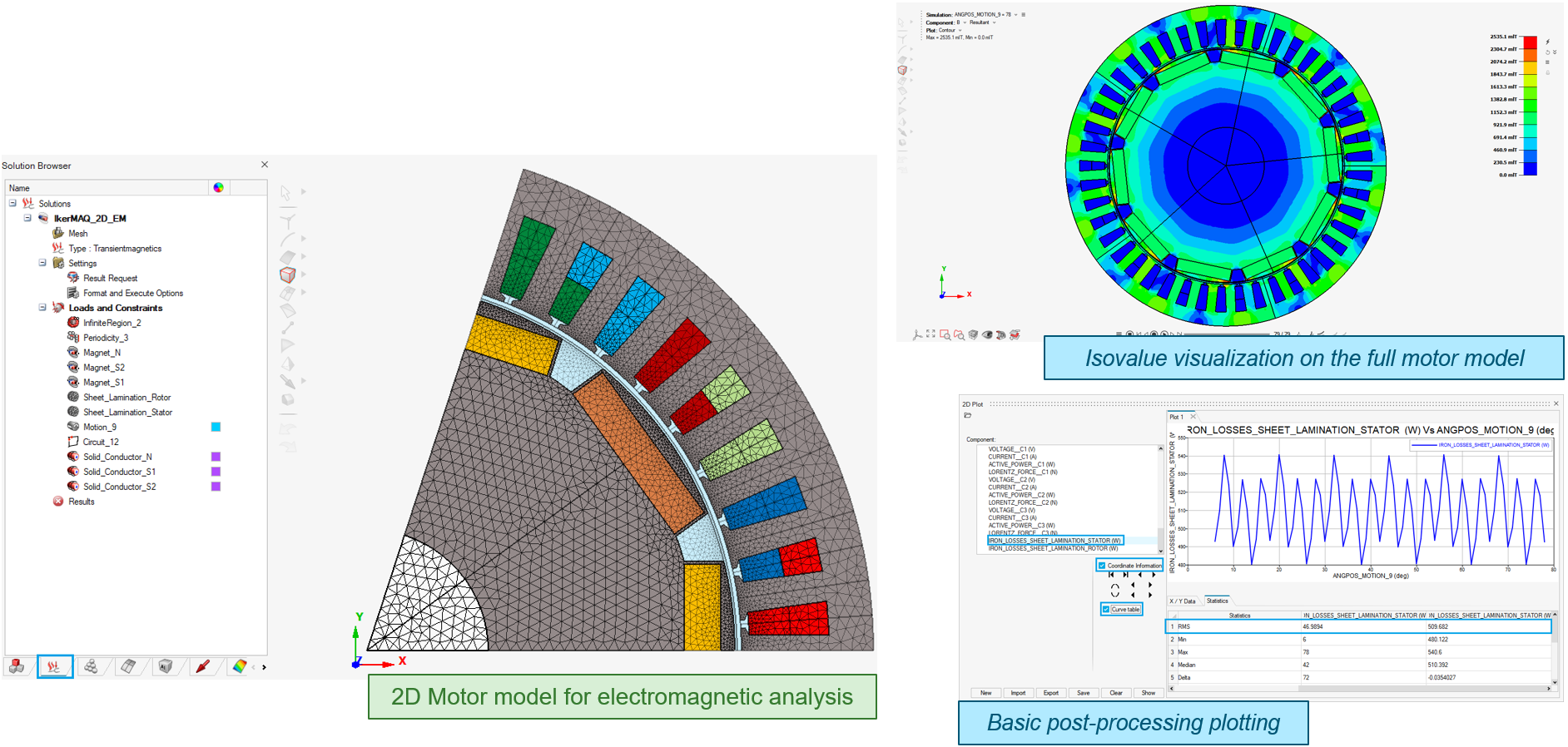
Analysis 2: Vibration and acoustic analysis
Once the PMSM is electromagnetically computed, the second step is to analyze its NVH characteristics. In Flux, the most common way is to export the electromagnetic forces acting on stator teeth from the transient magnetic analysis and run the NVH analysis with OptiStruct.
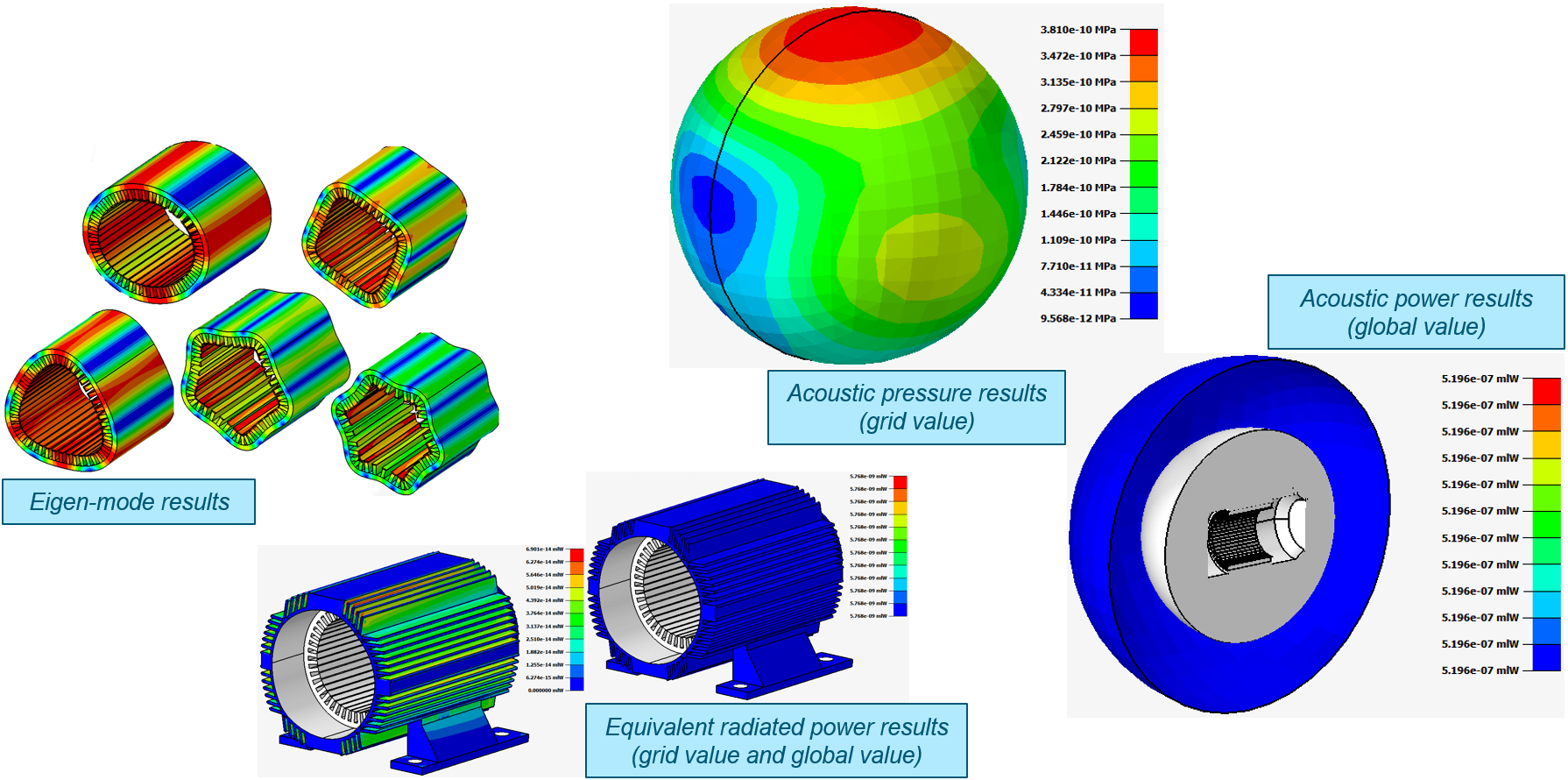
Analysis 3: Steady-state CFD analysis
Staring from the 2D transient magnetic analysis, the third step is to analyze its thermal characteristics. In Flux, the most common way is to export the copper loss / iron loss information from the transient magnetic analysis and run the CFD analysis with AcuSolve. The following temperature distribution figure provides a primary analysis of the thermal characteristic inside the motor.
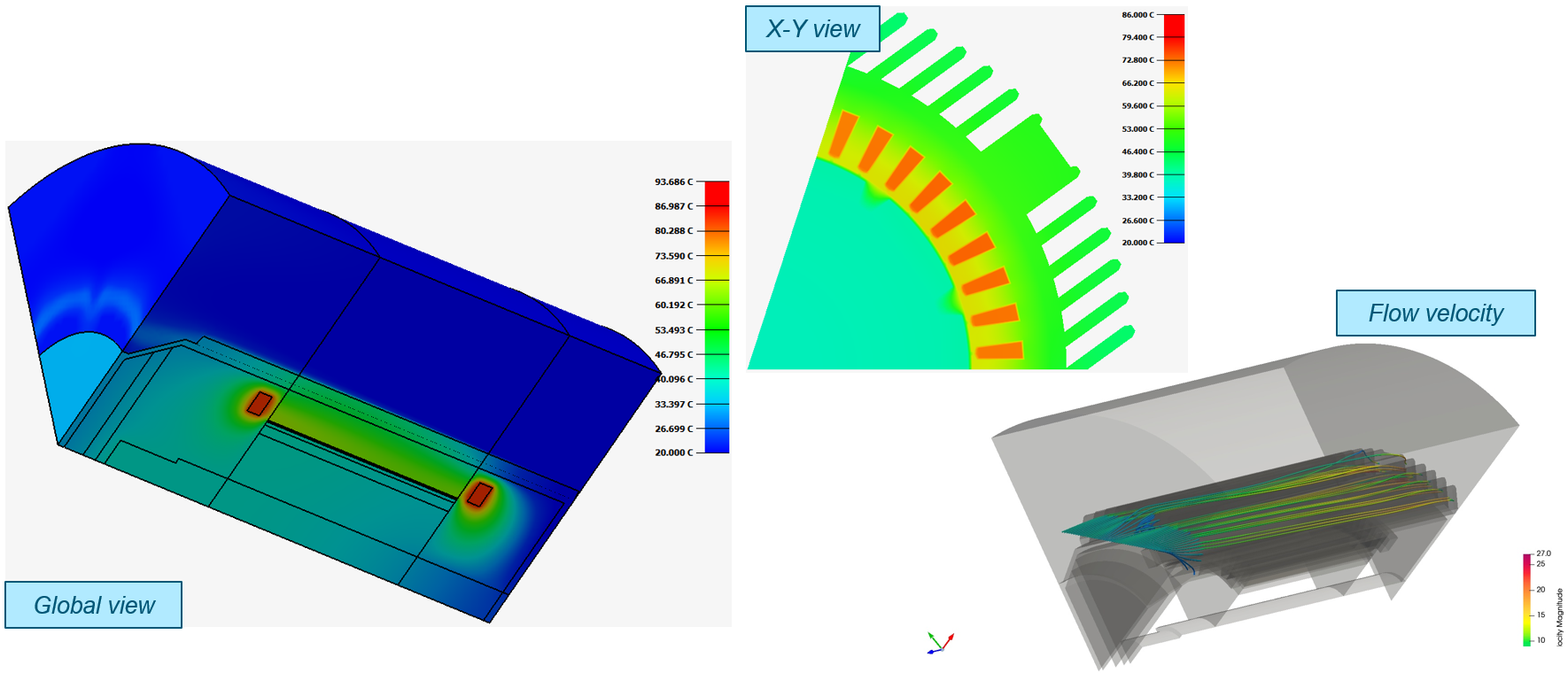
Example access
All files corresponding to this example are accessible in the Knowledge Base in Altair community:
- to follow the example step by step, the corresponding files are in
"Example_name_StepByStep" folder containing:
- Tutorial folder: contains the document describing the example step by step
- InitialFiles folder: contains *.slb databases and files needed to build the example step by step
- to play scripts and retrieve SimLab and Flux project, the corresponding files
are in "Example_name_PlayScripts" folder containing:
- ScriptsTutorial folder: contains script files to be able to play each analysis
- Input folder: contains initial *.slb databases and all necessary files to play each analysis script
- Output folder: empty (contains the obtained results after the script execution)